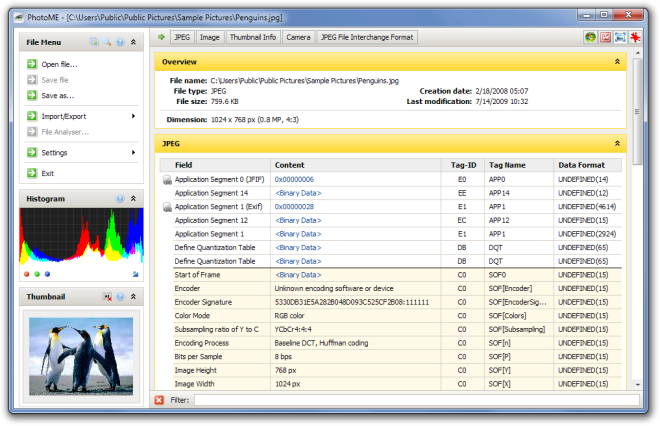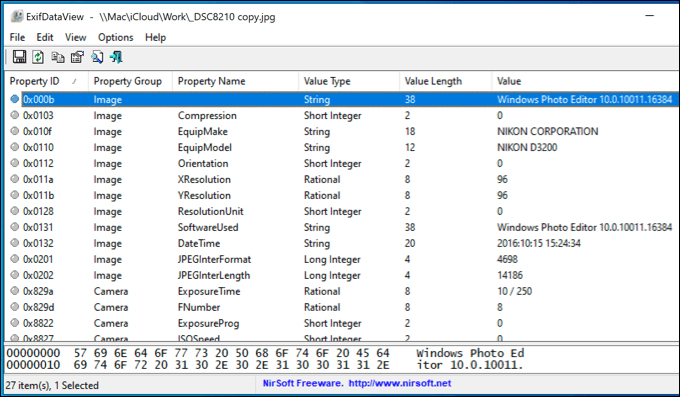

#EDIT EXIF METADATA SOFTWARE#
Metadata editing software simplifies this process and gives users more power and control.Įach editor is different, but there are benefits that are generally universal, such as the ability to open and view a metadata-rich file. Benefits of an effective metadata editorĪnyone who has tried to edit the metadata of a digital file will know that the task can be quite daunting and time-consuming, especially if there are a large quantity of files to edit. This article delivers seven fantastic examples, explaining each option in detail. Photograph by Matt Hintsa, used under a Creative Commons Attribution-NonCommercial-NoDerivs 2.0 Generic licenseĮnjoy this piece? I invite you to follow me at /dudleystorey to learn more.Metadata has the power to simplify many of our difficult digital tasks, but it’s not always so easy to edit it, especially en masse.įortunately, there are some powerful software systems designed to alleviate the pressure of metadata editing and make it easy.

With the data added, save your image as usual, with the alteration that you must turn on the option for metadata: either the All Except Camera Info or All option. For right now, we’re only interested in the areas most easily accessed by PHP: the ITPC tab, most particularly the slots for creation date, location, and content of the image. In PhotoShop, the metadata editor is found under File / File Info… (For this example, I’ll use a Creative Commons licensed photographs by René González.)Īs you can see, there are many options for adding metadata to an image (the adventurous will spot Dublin Core as one possibility). If our portfolio consists of just a few images (or if you have the ability to add metadata while editing the image) I would recommend using Adobe PhotoShop or Bridge to add the correct information. (In order to do that, I would recommend RDF… but as an XML standard, RDF is somewhat harder to explain and use… so I will leave that for another time.)įirst, we need to make sure our images are correctly tagged with ITPC data. The format is richer and more diverse than EXIF, while eliminating all the drawbacks above, except for the last: PHP doesn’t support reading IPTC from PNG or GIF files. Instead, I’d suggest using IPTC data as a source of captioning information.

Many applications, including PhotoShop, have the ability to read and re-write EXIF, as does PHP. (The acronym is a little bit of misnomer: EXIF is also used in some audio formats).ĮXIF is intended to be a “write once, read many times” record: only information germane to the original image at the moment it is made, such as time, place, focal length settings and ISO, are meant to be embedded. In digital cameras and some other media, this data is in EXIF format. Most images contain metadata embedded in the bitmap file.


 0 kommentar(er)
0 kommentar(er)
